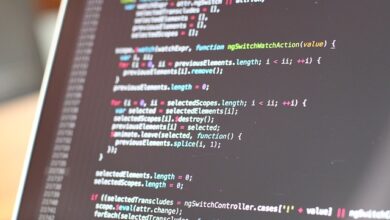Productivity Hacks for Busy Professionals: Boost Efficiency and Achieve More

In today’s fast-paced world, busy professionals often find themselves juggling multiple responsibilities, deadlines, and priorities. While hard work is essential, working smarter—not harder—is the key to maximizing productivity. In this guide, we’ll explore practical and actionable productivity hacks that can help you stay focused, organized, and efficient, even in the busiest of times.
1. Master Time Management
Effective time management is the foundation of productivity. Here’s how to take control of your schedule:
a. Use the Eisenhower Matrix
The Eisenhower Matrix helps you prioritize tasks based on urgency and importance:
- Urgent & Important : Do these tasks immediately.
- Important but Not Urgent : Schedule these for later.
- Urgent but Not Important : Delegate if possible.
- Not Urgent & Not Important : Eliminate or minimize these.
b. Time Blocking
Allocate specific blocks of time for different activities throughout your day. For example:
- 9:00 AM–11:00 AM: Deep work (e.g., writing reports, strategic planning).
- 11:30 AM–12:30 PM: Meetings.
- 2:00 PM–3:00 PM: Emails and administrative tasks.
This ensures you dedicate uninterrupted focus to high-priority tasks.
c. Set Time Limits
Use techniques like the Pomodoro Technique (25 minutes of focused work followed by a 5-minute break) to maintain concentration and prevent burnout.
2. Prioritize Your Tasks Daily
Starting your day without a clear plan can lead to wasted time and energy. Follow these steps to prioritize effectively:
a. Create a Morning Routine
Begin each day with a quick review of your goals and tasks. Ask yourself:
- What are my top three priorities today?
- Which tasks will have the biggest impact?
b. Tackle High-Impact Tasks First
Focus on your most challenging or important tasks early in the day when your energy levels are highest. This is known as “eating the frog.”
c. Avoid Multitasking
Research shows that multitasking reduces efficiency and increases errors. Instead, focus on one task at a time to complete it faster and with better quality.
3. Leverage Technology and Tools
Technology can be a game-changer for productivity. Here are some tools to streamline your workflow:
a. Task Management Apps
Apps like Trello , Asana , or Todoist help you organize tasks, set deadlines, and collaborate with teams.
b. Calendar Tools
Use digital calendars like Google Calendar or Outlook to schedule meetings, block time for deep work, and set reminders.
c. Automation Tools
Automate repetitive tasks using tools like Zapier or IFTTT . For example, automate email responses or data entry to save time.
d. Note-Taking Apps
Capture ideas and meeting notes quickly with apps like Evernote or Notion . These tools also allow you to categorize and retrieve information easily.
4. Minimize Distractions
Distractions are productivity killers. Take proactive steps to eliminate them:
a. Turn Off Notifications
Silence non-essential notifications on your phone and computer during work hours. Use “Do Not Disturb” modes to stay focused.
b. Create a Dedicated Workspace
Set up a clutter-free workspace that promotes concentration. If you work from home, designate a specific area solely for work.
c. Use Focus Techniques
Tools like Focus@Will (music designed to enhance concentration) or browser extensions like StayFocusd (limits time on distracting websites) can help you stay on track.
5. Delegate and Outsource
You don’t have to do everything yourself. Delegating tasks can free up time for higher-value activities:
a. Identify Low-Priority Tasks
Determine which tasks can be handled by others, such as administrative work, data entry, or scheduling.
b. Build a Reliable Team
If you’re in a leadership role, empower your team by assigning tasks based on their strengths and expertise.
c. Outsource When Necessary
Consider hiring freelancers or virtual assistants for specialized tasks like graphic design, content writing, or bookkeeping.
6. Optimize Communication
Poor communication can waste time and create unnecessary stress. Streamline your interactions with these tips:
a. Use Email Templates
Save time by creating templates for frequently sent emails, such as meeting requests or client updates.
b. Keep Meetings Short and Focused
Adopt the 15-Minute Meeting Rule whenever possible. Always have an agenda and stick to it.
c. Communicate Clearly
Be concise in your messages and ensure you provide all necessary details upfront to avoid back-and-forth exchanges.
7. Take Care of Your Well-Being
Productivity isn’t just about working harder—it’s also about maintaining your physical and mental health.
a. Get Enough Sleep
A well-rested mind is more alert, creative, and productive. Aim for 7–8 hours of sleep per night.
b. Exercise Regularly
Physical activity boosts energy levels and reduces stress. Even a short walk during your lunch break can make a difference.
c. Practice Mindfulness
Incorporate mindfulness practices like meditation or deep breathing into your routine to improve focus and reduce anxiety.
8. Learn to Say No
Overcommitting can derail your productivity. Politely declining unnecessary tasks allows you to focus on what truly matters.
a. Evaluate Requests
Before saying yes, ask yourself:
- Does this align with my goals?
- Will this add value to my work or life?
b. Offer Alternatives
If you can’t take on a task, suggest someone else who might be able to help or propose a later timeline.
9. Review and Reflect
Regularly assessing your progress helps you identify areas for improvement.
a. Conduct Weekly Reviews
At the end of each week, review what you accomplished and what didn’t go as planned. Adjust your strategies accordingly.
b. Celebrate Wins
Acknowledge your achievements, no matter how small. This boosts motivation and reinforces positive habits.
c. Learn from Mistakes
Analyze setbacks to understand what went wrong and how you can avoid similar issues in the future.
10. Embrace Continuous Learning
Staying updated with new skills and tools can enhance your productivity over time.
a. Read Productivity Books
Books like Deep Work by Cal Newport or Atomic Habits by James Clear offer valuable insights into improving focus and efficiency.
b. Attend Webinars and Workshops
Participate in professional development opportunities to learn time-saving techniques and industry best practices.
c. Experiment with New Methods
Try different productivity frameworks (e.g., GTD, Kanban) to see what works best for you.



